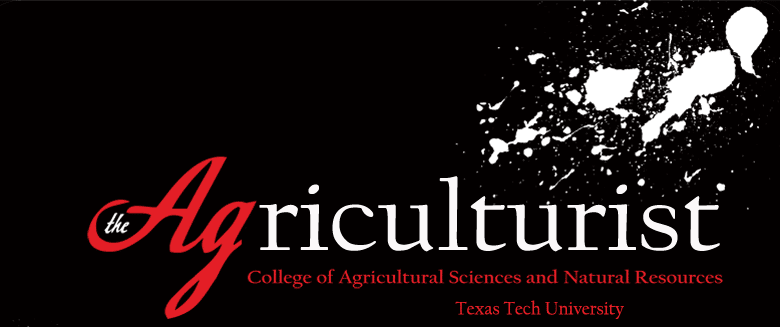
Table of Contents
Features
Agriculture: We Can Sustain It
Socializing Agriculture
Painter of Quiet Places
An Apple a Day
Sustaining the Four Sixes
Hitting Pay Dirt
The New Face of Agriculture
The Winds of Change
Avatars Animate Agriculture
Professors in Training
Going Green
Saving Lives One Plan at a Time
Protecting Our Food
Quality Cells, Consumer Buys
Tech's New Mate
Micro ZAP
Food Saftey in Mexico
Expanding Opportunities
No Bits About It
The Family Farm Fire Man
Around the World with CASNR
Live From Texas Tech
Looking Forward
Getting Schooled
A Cotton Senstaion
Living and Learning
More Than a Trophy
Online Exclusives
Alumni Lance Barnett: Unpeeled
Agricultural Education and CommunicationDepartment Shines in 2010
Facing Nature
GINuine
Healing Hooves
Parking and Partying in Style
Raider Red Meats
Standing TALL
Tech Takes Flight
West Texas Cotton Goes Global
CSI: Classroom Soil Investigation
By Amber Krause
A lone field is carefully marked with yellow tape. Surrounding the area where the body was found are the words “Crime Scene Do Not Enter.” Multiple parties search and gather evidence to solve the crime. The investigators find a fingerprint, but not from the suspect or the victim. It is from the soil.
The Plant and Soil Sciences Department at Texas Tech University introduces the area of soil forensics to students. Under the leadership of Jennifer Moore-Kucera, an assistant professor of soil and environmental microbiology, students learn the potential role soils play in solving a crime when they enroll in the principles and practices of soil course.
Jim Childress, a colleague of Moore-Kucera, works at the Institute for Forensic Science. He assists Moore-Kucera with her introductory soil course. During one lab session, she takes her students to visit the Institute, located in Lubbock, and allows students to collect soil from a mock crime scene.
Kucera explained students learn the difference between taking a crime scene sample and taking an agriculture-related sample for nutrient analysis. With a smile, she said students are always pleased after the lab assignment.
“It exposes students to a completely different field that most people would not think about,” she commented.
Students are not the only participants in this peculiar aspect of soil science. Kucera also participated in a crime scene investigation.
We collected soil samples under a deceased body a couple of years ago, Kucera said. These samples were evaluated for pharmaceutical drugs as a pilot study to determine if detection is possible. The lack, or presence, of certain agents could help identify the body, time of death, and if the body had been moved.
By analyzing soil components, investigators can determine if a sample matches another sample from a designated area, much like a fingerprint.
Kucera said she discussed current soil forensic research by others in Australia with Childress. The Australian group focuses on the chemical, physical, and biological characteristics of the soil to create a soil identity, she clarified. Basically, different locations have a certain combination of mineralogical and biological components, and create a unique fingerprint.
In Australia, the research is compiled into a database. She said they have discussed incorporating the research in Lubbock to determine a soil fingerprint database for West Texas.
Lisa Fultz, a doctoral student in soil biochemistry working in Moore-Kucera’s lab, said the lab led her to audit a course at The Institute for Forensic Science. It was a crime scene investigations class explaining the variety of evidence investigators collect at various crime scenes.
There is more to an investigation than putting a sample in a machine. In reality, investigators do not receive a computerized victim profile instantaneously. The class emphasizes the importance of experts in the science of investigation.
Fultz also mentioned the possibility of incorporating the Austrailia research at Texas Tech.
“There is a big push for it,” Fultz stated, “but it takes a lot of time and money. “
Kucera said she plans to speak with soil forensic experts and hopefully gain insight on incorporating the research in the Plant and Soil Science department.
Texas Tech continues to collect evidence on soil forensic research. With the interest and proper funding, maybe soon, students will reveal the fingerprint of the West Texas soil. Until then, it remains an unsolved mystery.